On a rigid vehicle that has two axle sets and is steered by the front axle set, the front axis is the centre point of the foremost axle.
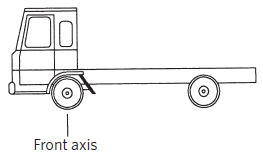 Rear axis
Rear axisRear axis (RA) is the point at which the vehicle rotates around, during a turn.
If the vehicle has only one non-steering axle, then the rear axis is the centre of that axle.
If the vehicle has a tandem axle set (that is, two axles in a set, with from 1 to 2 metres between axle centres) with only non-steering axles in its rear axle set and each axle has an equal number of tyres on it, then the RA is midway between the centres of the axles.
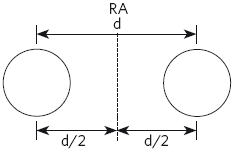
Tandem rear axle set
If the vehicle has a tandem axle set with only non-steering axles in its rear axle set and one axle has twice as many tyres on it as the other axle, then the RA is positioned two-thirds of the distance from the lesser-tyred axle towards the greater-tyred axle.
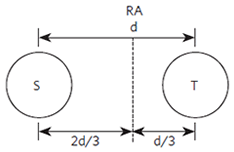
Tandem rear axle set with only non-steering axles, one single and one twin tyred
If the vehicle has a non-steering tri-axle set in its rear axle set, then the RA is midway between the extreme axles of the set.
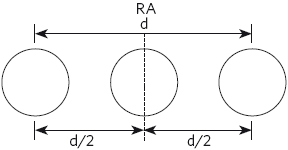
Non-steering rear tri-axle set
If the vehicle has one steering axle in its rear set and one non-steering axle, the RA is at the non-steering axle.

One steering rear axle and one non-steering rear axle
If the vehicle has one steering axle in its rear set and two non-steering axles, the RA is midway between the extreme non-steering axles of the set.
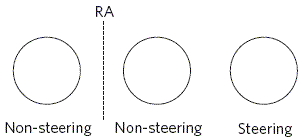
One steering rear axle and two non-steering axles
If the vehicle has one or more retracting axles in its rear set and one or more non-retracted axles, the RA is midway between the extreme non-retracted axles of the set.
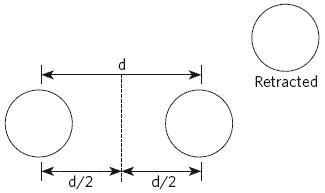
One or more retracting rear axles and one or more non-retracted axles
If the vehicle has a quad axle set with steering axles, the RA is shown as below.
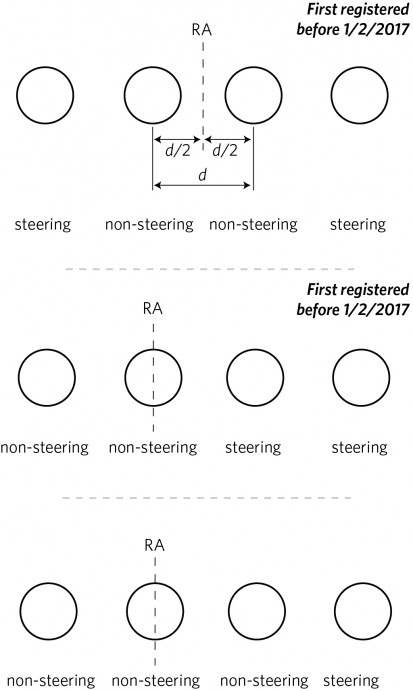
Quad axle set-up
A person or company carrying either:
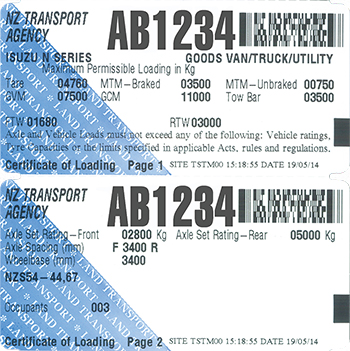
Example of certificate of loading
This must be attached to the vehicle and displayed so it is readily visible. The information shown on the certificate of loading will include the vehicle’s:
Heavy vehicles with a windscreen must display a current:
Heavy vehicles without a windscreen (such as trailers) must display a current:
A person who operates and directs the course of a vehicle.
Any kind of movable property (including animals and mail).
A goods service is:
The following are not defined as a goods service:
Any motor vehicle – except a tractor – designed wholly or mostly to carry goods.
The sum of the GLWs of the vehicles that make up a combination vehicle.
The greatest of:
The greater of:
The weight of a rigid or combination vehicle, together with any load it is carrying (including equipment and accessories).
Note: the gross weight may be calculated by adding the weight on the vehicle’s axles or groups of axles.
A motor vehicle that has a gross vehicle mass (GVM) exceeding 3500 kilograms.
High productivity motor vehicles (HPMVs) are vehicles permitted to carry a load that may be over-length and/or over-weight but not over-width or over-height. More information about HPMVs is set out in factsheet 13g High productivity motor vehicles.
Factsheet 13g High productivity motor vehicles online(external link)
Apply for your HPMV permit online(external link).
Hire means to employ someone or use something in return for payment.
Reward means any type of payment given or received for a service. The payment doesn’t need to be made by the direct recipients of a service, for example, where passengers hire a taxi service to transport them but a third party pays for the service.
Any part of a load (including covers, ropes, ties, blocks, tackles and barrows) or any other equipment used to:
Note: this does not include waste from animals being carried on a vehicle at the time.
If you drive a vehicle that has non-pneumatic tyres or is fitted with metal tyres,lugs or cleats, you need approval from the local road controlling authority before you can use it on the road.
Vehicles larger than maximum standard size may be able to operate on roads according to the conditions set out in factsheet 53a Overdimension vehicles and loads.
Factsheet 53a Overdimension online(external link)
Large loads need an oversize permit. To obtain an oversize permit, contact the Overdimension Permit Issuing Agency:
Before an overweight vehicle or load can be used on the road, the driver must obtain an overweight permit, which must be carried in the vehicle. (Size and weight restrictions for different kinds of vehicles are explained later in this section.)
To obtain an overweight permit, contact your nearest Transport Agency office.
Vehicles may carry loads that are higher, longer or wider than the dimensions of the vehicle itself, provided that the load doesn’t exceed the maximum permitted dimensions for that class and type of vehicle, and the vehicle can be moved safely when so loaded. It’s the driver’s responsibility to ensure the load is properly secured to the vehicle so that the vehicle remains stable at all times.
Loads that overhang the outside of the body or deck of the vehicle by more than 1 metre to the front or rear, or more than 200 millimetres to the left or right side, need to carry special warning devices attached to the overhanging end(s) of the load as follows:
Note: hazard warning panels that extend beyond the edge of the vehicle must be frangible (breakable or readily deformable).
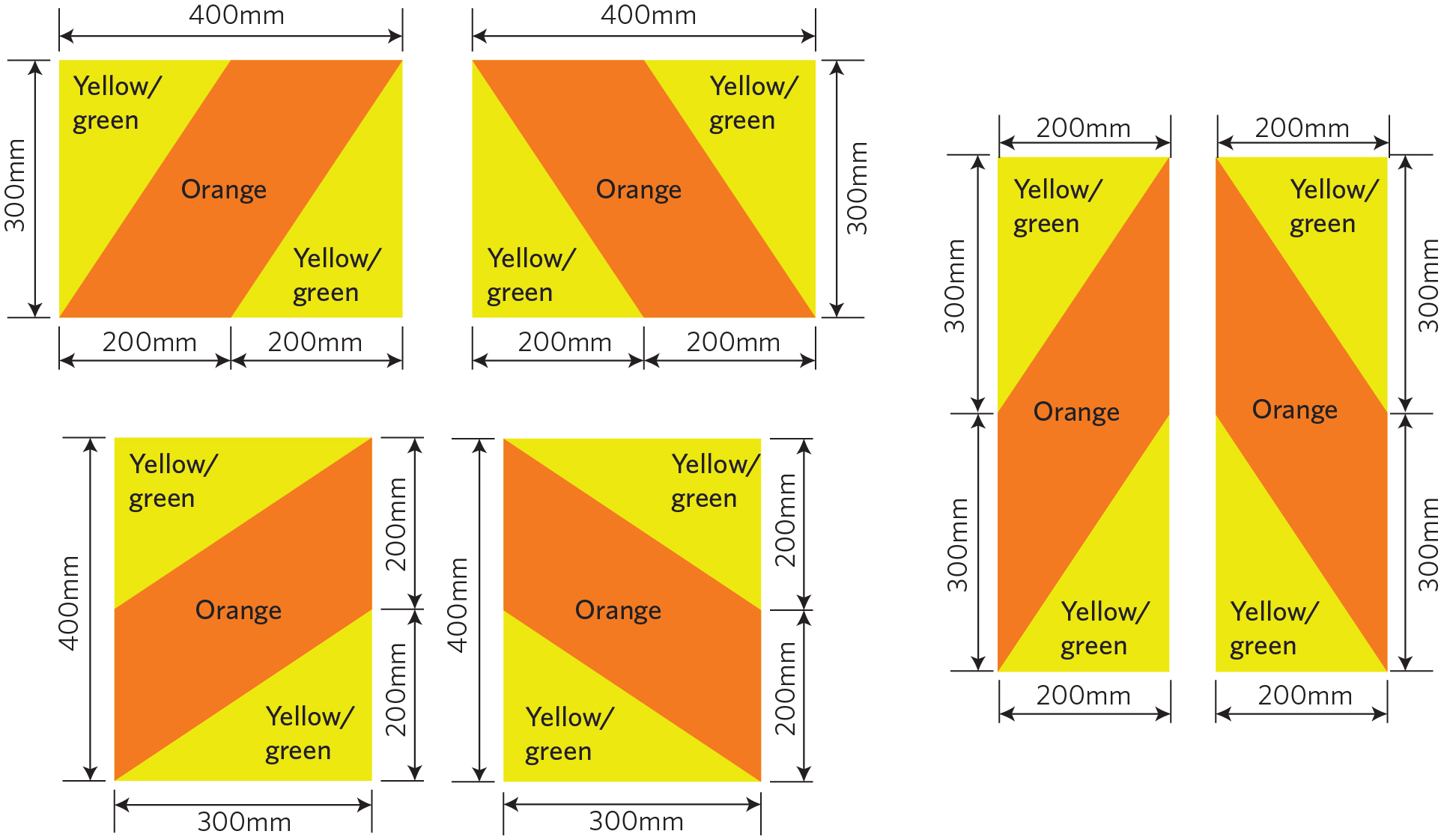
Minimum dimensions of hazard warning panels
These lights need to be clearly visible in clear weather at a distance of at least 200 metres during the hours of darkness.
Motor vehicles must be fitted with at least one pair of approved red reflectors at the rear of the vehicle. The reflectors must:
When laden or unladen, most goods service vehicles with a maximum gross vehicle mass (GVM) exceeding 12 tonnes must have a static roll threshold (SRT) of at least 0.35g (where g is the acceleration due to gravity). A heavy trailer of class TD must be certified to comply with SRT.
A goods service licence, large passenger service licence, small passenger service licence, rental service licence or vehicle recovery service licence, granted or deemed to be granted under part 4A of the Land Transport Act 1998.
A goods service vehicle, vehicle recovery service vehicle, passenger service vehicle or rental service vehicle.